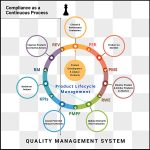For many manufacturers of IVD devices now on the European market, meeting the evidence required of the EU In Vitro Diagnostic Medical Devices Regulation 2017/746 (IVDR) will require tremendous work. With the shortage of notified bodies and resources, numerous outstanding guidance questions, as well as skyrocketing costs, many industry stakeholders are asking, “What is going to happen?”

Recently, I spoke with RAPS Convergence speaker Carlos Galamba, vice president, Intelligence and Innovation with RQM+ to discuss the ramifications of IVDR for manufacturers and developers.
Prior to joining RQM+, Galamba served as a technical reviewer, technical team manager and clinician with BSI, a notified body. Before BSI, Galamba worked as a lead scientist with the National Health System in the UK, working in transfusion medicine.
IVDR – A Significant Shift in Regulatory Requirements
Under the previous IVD directive, manufacturers could place most IVD devices on the market with very little regulatory supervision. “Manufacturers could literally write an intended purpose, have very little evidence to support it and still bring that product to market, simply because there was no notified body review,” says Galamba. The exceptions included high-risk devices, such as HIV-type tests, hepatitis tests and blood grouping devices
“There was very little supervision for all other devices. Devices could have an intended purpose with claims that were not fully backed up by the appropriate studies,” says Galamba. “And no one would really look at it from a technical and/or regulatory perspective.” In essence, a manufacturer could self-declare product conformity and file a product registration with a competent authority in Europe to enter the market. Under IVDR, that has changed significantly.
“As many as 90% of devices now need to get certified by notified bodies in Europe,” says Galamba. These are bodies that have been designated by EU countries and the Commission to assess the conformity of certain products before they are placed on the market. As a result, “There’s much more scrutiny on the intended purpose.”
Manufacturers can no longer claim that a device is used for diagnosing an illness or multiple clinical conditions without the evidence to fully substantiate those claims. In addition, there is no grandfathering. Therefore, many of the legacy devices previously certified under the IVD directive must be certified again and undergo notified body scrutiny to meet the IVDR.
Initial findings by the notified bodies, “have uncovered that in a lot of cases, the intended purposes are poorly defined and not fully substantiated by the evidence that is presented in the technical documentation,” says Galamba.
The Biggest Regulatory Stumbling Block
One of the biggest stumbling blocks for manufacturers, particularly those with legacy devices, is clinical evidence under IVDR. “We are about two years on since the first ever IVDR certificates were issued… and a lot of learnings have taken place,” says Galamba. Notified bodies have done many IVDR reviews. One of the most common findings is insufficient demonstration of clinical evidence.
Subscribe to the MedTech Intelligence weekly newsletter to stay up to date on the latest news and information on medical device development and regulation.
Clinical performance alone accounts for 40% of all notified body findings. “This is particularly problematic when we look at legacy devices moving to the IVDR,” says Galamba. “Under the IVDR, there’s a whole new framework for clinical evidence that is legally required, including analytical performance, scientific validity, performance evaluation plans, performance evaluation reports, clinical performance reports, etc. There are several new deliverables that were not necessarily called out before but are now formally required under the IVDR.”
Collating and/or generating the necessary evidence for IVDR compliance is challenging for most companies. Unless they have the right expertise in-house or external support, generating all necessary data for IVDR compliance can be a minefield. In Galamba’s experience, companies need to fully grasp the new IVDR regulatory framework and be able to tell a strong performance evaluation story; one that is traceable throughout the entire technical documentation. Otherwise, there will be gaps, resulting in “findings coming back from notified bodies, and the technical files just don’t get approved,” he says.
Closing Clinical Evidence Gaps
In some cases, the evidence is not as robust as it could be. For example, if a company is submitting an application for a diagnostic device involving rare tumor types, it may need to approach the notified body with evidence from a smaller set of clinical samples. In such a case, after considering the benefit-risk and safety profile of the device, there may be enough value in placing the product on the market, provided the company commits with its notified body to complete further testing in the post-market phase as more tumor samples become available.
However, “that is only in very rare cases and needs to be duly justified to your notified body,” says Galamba. For most devices going through notified body review, you will need to approach the notified body with a very robust set of data, all your analytical and clinical performance studies completed and with sufficient sample sizes backed up by appropriate statistical rationales. Additionally, all technical documentation should be aligned with IVDR requirements and clinical evidence must demonstrate complete support of a device’s intended purpose and the intended clinical benefit(s).
Some Legacy Devices Will Disappear from the Market
Even with the progressive rollout of the IVDR, adopted by the EU Parliament and Council to give legacy IVDs more time to transition, it is likely that some legacy devices will disappear from the market, says Galamba.
Under the new timelines, IVDs will need to progress to IVDR over the next three to five years. The first deadline is for high-risk class D devices that need to meet the regulation by May 2025. That is followed by Classes C and Class B IVDs in 2026 and 2027, respectively.
When the new transition timelines were announced by the EU Commission, only 5% of legacy IVDs that needed an IVDR certificate had been granted one. That situation has now improved, but there is still a very large portion of the market that needs IVDR certification.
Based on his experience working in consultancy and with notified bodies, Galamba suspects that some manufacturers are leaving their IVDR transitions to the very last minute, and many companies are yet to act. This represents a real threat that some devices will disappear from the market because manufacturers are underestimating how long certification really takes and how complex IVDR is in comparison to the IVDD.
Most large manufacturers have already started their transition, says Galamba. Some of the very first IVDR certificates were issued to big diagnostic companies, such as BD and Roche. However, many small- to medium-sized organizations still have a long journey ahead. Mainly because they are less likely to have worked with a notified body before and therefore have a longer learning curve ahead.
Adding to the challenge is the shortage of notified bodies. “At this point, it’s really difficult to find and secure a notified body to review your devices,” says Galamba.
Why Was IVDR Implemented?
Given the challenges—and the significant changes—of IVDR, it is important to consider why IVDR was implemented. Galamba offers a compelling example: When he worked in transfusion medicine, he used a technique called gel card agglutination, which identified if a patient is cross-matched (positive or negative) with a particular blood donation. “That’s a very simple technology that’s been around for many years,” he says.
“I remember needing access to a transfusion card very quickly for a particular patient that was in the operating theatre, and a batch defect prevented me from using any of the available cards,” he continues. “Unfortunately, I could not conduct the necessary test on time. I essentially needed to use an IVD product in a life-threatening situation, and I didn’t have access to it, which is extremely serious.”
It was the type of batch defect that could have been avoided through better product release controls and enhanced release specifications, a key component of any notified body review. Based on this experience, it was one of the risks Galamba always made sure was sufficiently controlled by manufacturers when he joined the notified body as a technical reviewer.
“In my view, regulation is always there for a reason: protecting patients,” says Galamba. “It’s not perfect, but the IVDR was very much needed in the diagnostics space.” Much has changed in the diagnostics space since the IVD directive was published and a list-based classification was no longer fit for purpose.
IVDs account for as much as 70% of all medical decisions. With the evolving role of technologies, such as next generation sequencing, different uses for IVD software and advances in precision medicine, for example, there was a need for a new, transformative regulatory framework. One that placed clinical evidence and risk-benefit at the center of the conformity assessment process.
Still, says Galamba, there is a long journey ahead, and manufacturers cannot afford to wait any longer without seriously threatening their market positioning. IVDR is here to stay and will soon become the new normal. Companies that fail to recognize that the IVDR drastically changes the way they operate are likely to be the biggest losers.






